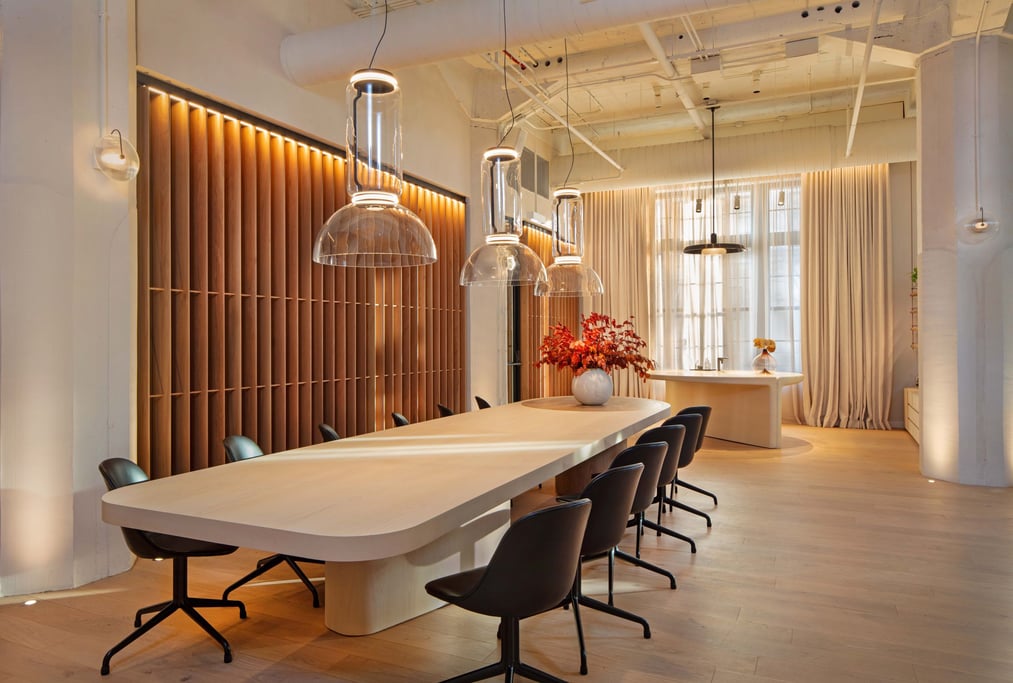The old adages say that opposites attract and familiarity breeds fondness, but which one leads to a long-lasting, successful bond? Well, when it comes to lighting, it’s neither. In fact, it’s all about striking a balance and finding a compromise between the two key players: daylight and electric light.
Our Founder, Avraham Mor, is here to spotlight the ways that daylight and electric lighting come together to work in beautiful harmony and share the ultimate key to success in striking this balance: bringing on an expert lighting designer to make it happen!
.jpeg?width=1024&height=683&name=Entry_(1).jpeg)
How to Strike a Balance with Lighting
Let’s look at the place we’ve all come to know and love this past year: our home offices! I find it amazing how much work I can do in my office with no electric light –it sits at 3000K, which is a bit warmer than that of the 2 pm sun (8700K). I like to rely predominantly upon the northerly sun to power me through most of my workday which is providing on this day, 150 lux at 8700 K, 92.7 CRI.
When I do need a little bit of illumination, I add my indirect light source which is 3000K and 95 CRI , which adds some warm light into my space to properly light my workspace. That is plenty of light for me, but my wife likes about 100 lux more. She prefers that the electric light in the office sits at 50%, generating 250 lux, and as it’s more electric light, brings the CCT down to 4000K, and 92.2 CRI.
What does that mean in terms of color? A lot more green and yellow tones are produced with the electric light compared to the daylight – enter: dimming. We bring in dimmers to offset these tones and achieve the proper balance of interior color for the space. They give you the power to adjust the quantity of light in the space, which when done properly results in the perfect balance between daylight and electric light.

So how do you maintain this balance for long-term success? Controls, controls, controls – they should be your best friend! Controls, including dimmers, make it possible to balance the color and quantity of your electric lighting when working to supplement daylight. The best day-to-day application of this is via white turntable lighting, which allows you to adjust the color temperature of a lamp in real-time. This results in beautiful, balanced interior lighting!
Just as the lighting in any space requires a balance of daylight and engineered light, relationships of any kind require the same compromise. So while my wife and I prefer to work with different quantities of electric light in our office, dimmers and controls give us the tools we need to strike a perfect balance of daylight and engineered light. I call that a successful compromise – after all, a happy wife equals a happy life, right?!

